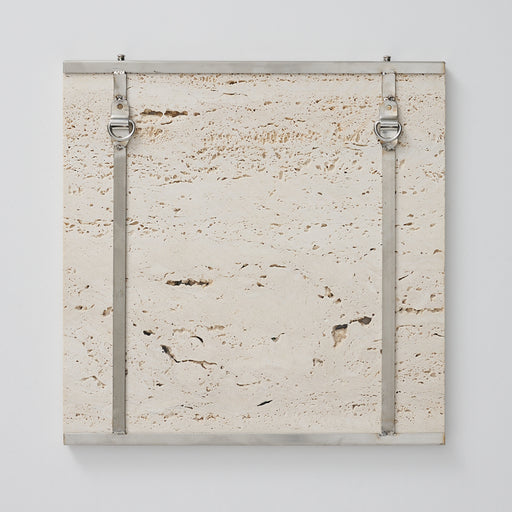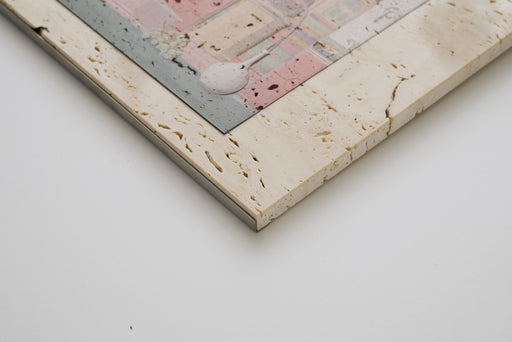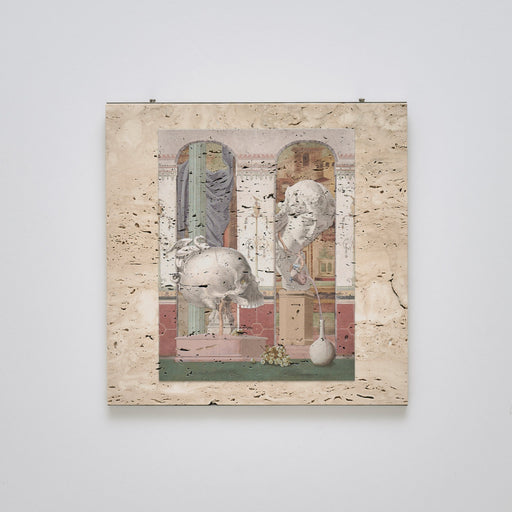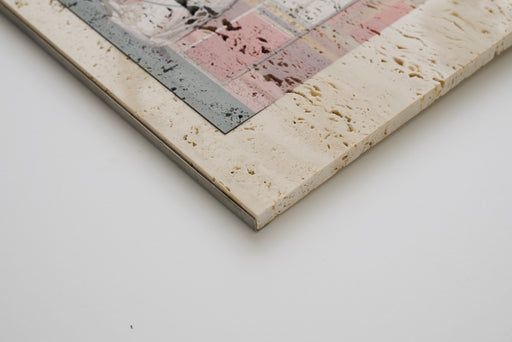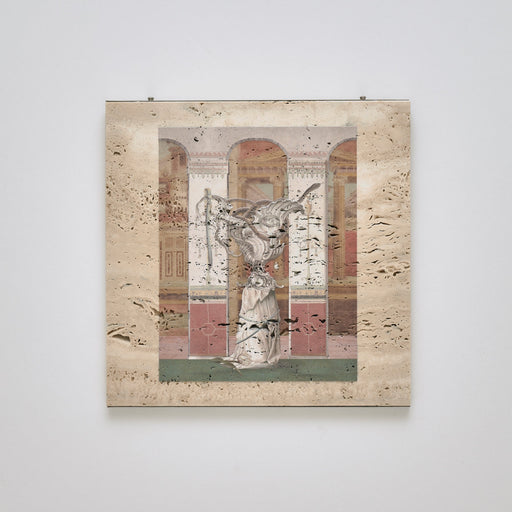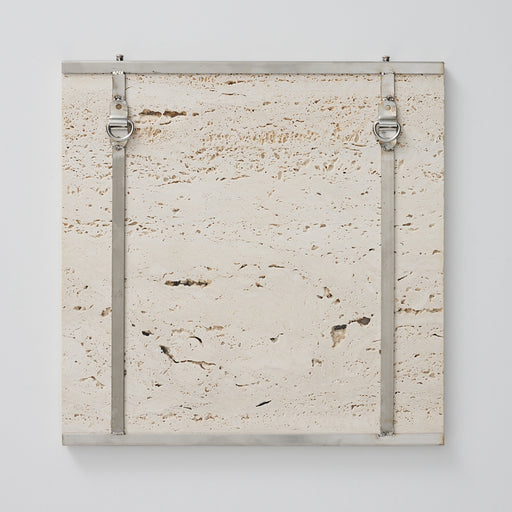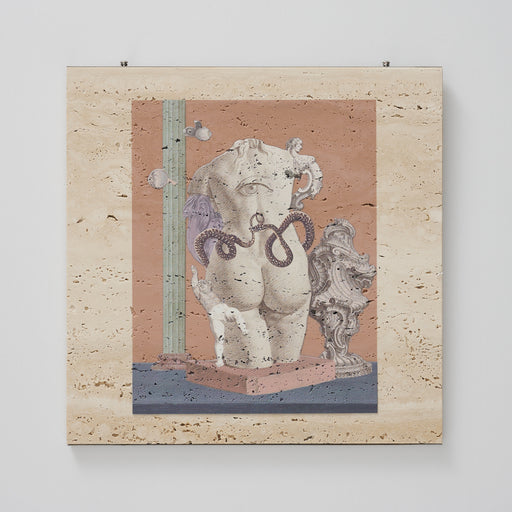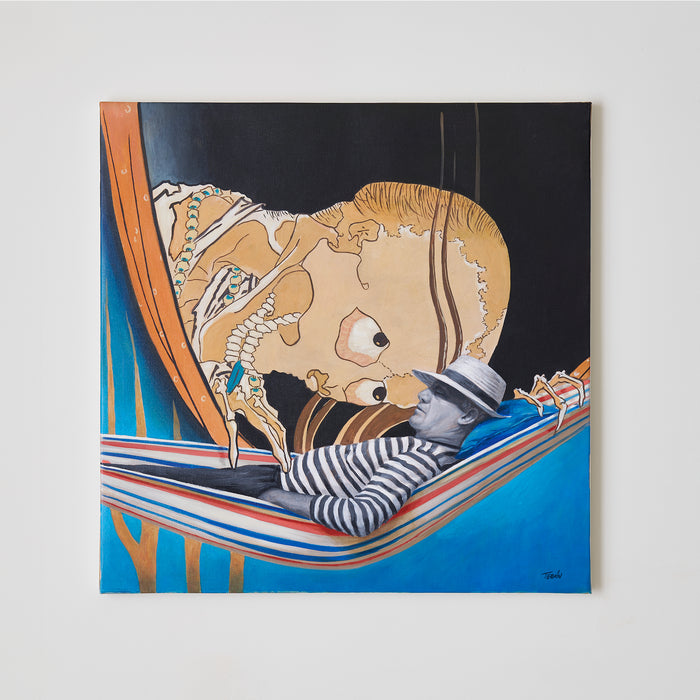
TERÁN
The Ghost of Casadegemas
| size |
H600 W600 mm |
| Year of production |
2025 |
| Categories |
Painting |
| Shipping |
Expected to ship within 3-4 weeks after the exhibition ends Please see above for details on shipping charges. |
| material |
Oil on Canvas |
作品説明
In this artwork, Picasso is shown napping peacefully in a hammock, his wide-brimmed hat casting a shadow over half his face. His breath is slow, almost childlike. But behind him, taking advantage of the silence, something stirs. A shadow leans in, almost invisible: it’s Casagemas. The ghost extends his hand, and with the tip of his fingers, barely touches Picasso’s body. The artist shudders, a soft sigh escaping in his dreams.
What does he want? What has he come to tell him?Is it reproach, tenderness, a warning?
The death Picasso turned into blue now returns, almost colourless, without judgment. Just presence. Perhaps he’s here to remind him that there are wounds that never heal.
Or maybe... he just wants him to look.
Regarding the skull
Kohada Koheiji is a woodblock print by Katsushika Hokusai, created around 1831–1832. It illustrates a famous Edo-period ghost story and is known for its striking image of a skull suspended in a net or hammock—an unusually realistic detail believed to have been inspired by Western anatomical books circulating in Japan at the time.
The story centers on Koheiji, a struggling actor in Edo who was cast as a ghost because of his pale, haunting appearance. Determined to succeed, he studied the faces of the dead and gave such a powerful performance that he became known as “Ghost Koheiji.” Ironically, he later became a ghost himself—murdered by his wife’s lover during a touring performance.
After his death, Koheiji returns as a ghost indistinguishable from his living self, haunting the man and his unfaithful wife until both are driven to madness and death. The tale reflects themes of betrayal, revenge, and the thin line between performance and reality.
Today, the print is celebrated for its detailed composition, eerie atmosphere, and clever mix of horror and theatrical irony. It stands as one of the finest examples of Japanese ghost imagery from the Edo period.
アーティスト
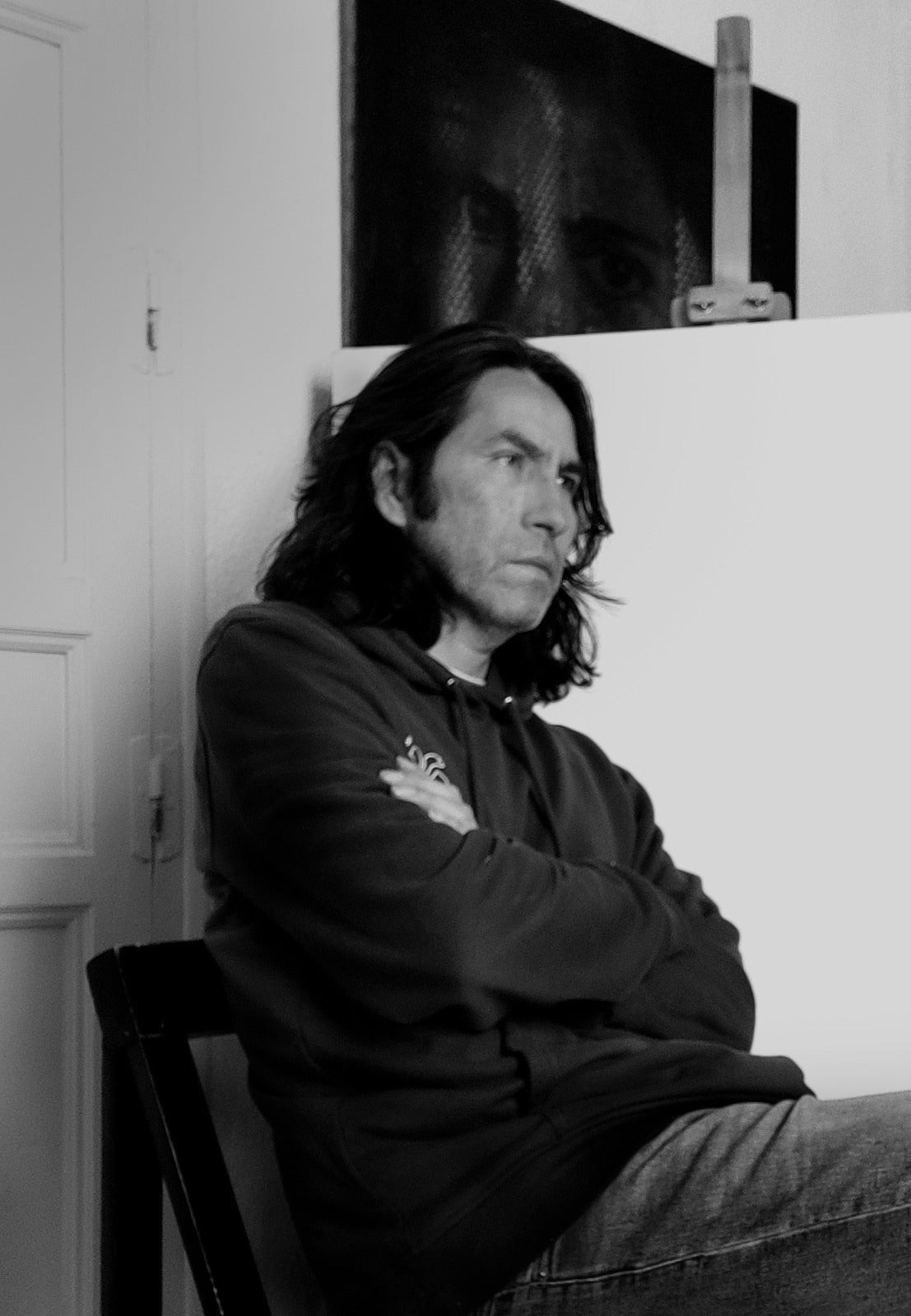
TERÁN
Terán is an internationally acclaimed artist whose work has been shown in renowned galleries and art fairs in Europe and Latin America. His expression is characterized by a unique painterly language that blends tradition and modernity, and he continues to explore the possibilities of art while incorporating new techniques, focusing on urban landscapes and visual memories. Recent projects include the critically acclaimed "Making-of", which was exhibited in galleries across Spain in 2024. In addition, he will exhibit "Homage to Fontana" at the Ateneo de Madrid in 2025, a work that pays tribute to Lucio Fontana, an iconic figure in contemporary art.
Also in April 2025, Teran will present his new "Fantasías de Picasso" series in Tokyo, marking his first solo exhibition in Japan. This exhibition marks an important milestone in Teran's career, creating a rare opportunity to create a visual dialogue across cultures through his encounter with a Japanese audience. Teran's work has a unique perspective, challenging tradition by crossing different styles and reconstructing the codes of painting. The series will travel to Helsingborg, Sweden at the end of the year, expanding his international activities. He uses irony as a creative tool with a bold approach, questioning how the viewer interacts with the image.
Over the years, his work has received numerous accolades, and in 2013 he was named one of the "100 Personalities of Latin America" in Madrid. He has also presented works paying tribute to great artists, such as "Retrato Capital", which has traveled to various cities since 2005, and the "Homage to Geniuses" series, presented at the Antonio Saura Foundation and the Ateneo de Madrid. In addition, he will participate in the "Latin American Week" held at the UNESCO Paris headquarters in 2022, strengthening his presence on the international art scene.
From Madrid to Tokyo and around the world, Terán continues to explore the boundaries of contemporary painting, offering a vision of art that transcends borders and enriches today's art scene.



